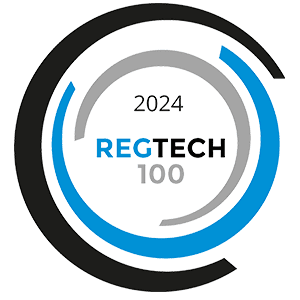
On March 6, Red Oak joined up with compliance experts Suzanne Denby (AVP, Supervision and Suitability, HTK), Matthew Johnson (Director, Compliance & AML Officer, Kestra Financial), and James Cella (Red Oak Compliance) to discuss challenges and best practices for supervising financial professionals’ online presence.
With the rise of social media, online advertising, and digital engagement, compliance teams face mounting pressure to monitor, supervise, and mitigate risks across multiple platforms. In case you missed the session, we distilled six key learnings from the webinar to help you and your team.
Clearly Defining Expectations
The foundation of effective compliance is built on clarity. Compliance expectations must be explicit, thoroughly documented, and clearly communicated across your organization. Employees and advisors should understand exactly what’s required of them, including what must be disclosed, approved, and regularly updated. This proactive approach reduces confusion and helps ensure that every team member fully grasps their compliance responsibilities. Regular training and communication reinforce these expectations, significantly lowering the risk of accidental violations.
“Expect What You Inspect” – Supervision Must Be Proactive
Financial professionals will market themselves online—whether or not compliance is involved. The only way to stay ahead is to proactively inspect the digital landscape. From social media posts to influencer marketing and affiliate partnerships, firms need clear oversight of all online activity to prevent non-compliance before it happens.
Social Media & Digital Marketing: The “Wild West” of Compliance
Social media is no longer optional for financial professionals—it’s a primary channel for client engagement. However, compliance teams struggle with legacy rules that weren’t built for digital communication. A single LinkedIn post, Instagram story, or tweet can unintentionally violate FINRA and SEC guidelines, making real-time monitoring and supervision essential.
Understand the Known vs. the Unknown
Managing known online activity—such as official websites and registered social media accounts—is already a challenging task. But it’s the unknown online activities, those not disclosed or long forgotten, that pose the most insidious risks. These can include old blogs, inactive social media profiles, or unreported websites associated with employees and representatives. Such forgotten digital footprints, although seemingly harmless, can inadvertently violate regulatory standards and trigger serious compliance issues.
One real-world example we’ve come across involved an advisor whose personal blog contained unapproved promotional content. The compliance team, unaware of its existence, had no way to monitor or control this content—until regulators flagged it, leading to reputational damage for the firm alongside some hefty regulatory penalties. Another firm faced scrutiny and ultimately a large fine when an employee’s dormant LinkedIn account, left unsupervised, contained outdated yet still publicly accessible marketing claims, highlighting the critical need for comprehensive digital supervision.
The Cost of Manual Supervision is Too High
Given the complexity of the digital landscape, manual monitoring alone is no longer sufficient. Tools like automated internet supervision and website monitoring, affiliate and influencer monitoring, and configurable escalation workflows provide an essential safety net, ensuring undisclosed or forgotten content doesn’t escape compliance supervision.
Suzanne and Matthew illustrated this in a case study in which a firm’s automated supervision tool quickly identified an advisor’s unauthorized website containing problematic content. This early identification allowed the firm to take immediate corrective actions before regulatory bodies intervened, significantly mitigating potential damage.
Building a Culture of Transparency and Accountability
Technology alone isn’t sufficient; successful compliance demands cultivating a strong culture of openness and accountability. Employees should feel encouraged—not afraid—to disclose their online activities proactively. Regular training and clear internal messaging that emphasizes transparency can help prevent small oversights from escalating into larger regulatory violations. This cultural shift from reactive to proactive compliance management drastically reduces risk exposure and creates a healthier, more robust compliance environment overall.
Conclusion: From Reactive to Proactive Compliance
We saw some real-life examples that underscore how even minor oversights can escalate into serious compliance violations if left unaddressed. Proactive, technology-enabled supervision allows compliance teams to manage risks effectively, fostering trust and confidence within and outside the organization, and doing so all with less time and fewer resources required.
Ultimately, the key to effective compliance lies in a balanced approach: clearly communicated expectations, proactive oversight through advanced technology, and a transparent culture encouraging early disclosure and accountability. Firms that embrace this approach are better equipped to manage risks, maintain regulatory compliance, and transform compliance from a burdensome, friction-heavy cost center into a real strategic advantage.
Missed our webinar? Watch it here.







